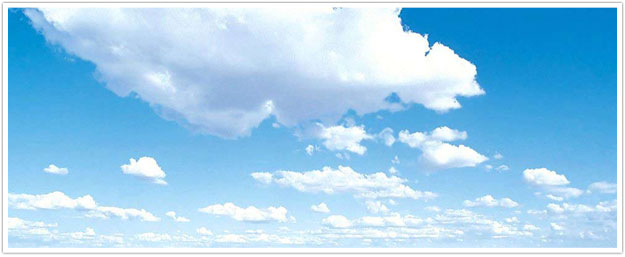Building a Thriving Community Ecosystem: The Five Essential Elements
February 2012
By Kenneth Vuncannon
What is an ecosystem?
In nature, an
ecosystem is defined as “a system formed by the interaction of a community of organisms with their environment.”
In today’s
culture of the Web, an online ecosystem is essentially the same thing – the organic result of the interactions that occur between the members of a community and the environment that they live in. It cannot be defined in and of itself but only as the sum of its thousand moving parts.
For brands that exist in today’s culture of the Web, there is no higher echelon of marketing than establishing your own community ecosystem. Why?
Well, it’s one thing to interact with your customers and fans in an ecosystem that someone else has built (e.g., Facebook, Twitter, etc.). However, because you didn’t build the ecosystem, you’re limited to one-off interactions that are structured according to the framework defined by the architects of that community (140 characters, anyone?).
On the other hand, however, when you’re the one that builds the sandbox, it’s your party. Your website becomes the place where members of your
tribe choose to hang out, to debate, to share and to be inspired by their peers – who, incidentally, are other members of your tribe.
Most importantly, their identity as a member of this community is inextricably linked to your brand. It’s a marketer’s wildest dream come true.
The process of building a thriving ecosystem is no small feat. Here are the five essential elements that you must have if you want to create a real, organic online community that simultaneously exists for and is a product of your tribe:
Earth: The foundation

Before you can build an ecosystem, you have to lay the foundation. But where do you begin?
In our series on
understanding and marketing to tribes, we established that tribes form around a shared passion for a specific idea, lifestyle or movement.
Therefore, for your ecosystem to thrive, there must be a common thread that draws people in and binds them to the community and its members so that they identify themselves as part of your tribe.
Your goal is not to build the next Facebook. People don’t need just another broad-based social network where they can set up a profile and post their thoughts. That already exists in any number of places where they already do those things.
What people are yearning for is to be among and connect with other people who share their passions. When you build a community around that passion, they’ll come there knowing it’s a place where they can satisfy that need to belong, where they’ll be among others who speak the same language and where they’re free to obsess over something with like-minded people who won’t mind if they talk
ad nauseum about that one particular thing that really stokes their fire.
So how do you find that common thread?
Think about your customers.
What do they love?
What excites them?
What challenges do they face day in and day out?
What do they worry about?
How can you tap into those things?
The answer to those questions is the foundation for your ecosystem. By identifying the common passion that unites your tribe, you can begin to build a community where great interactions will thrive.
Even if your brand only ever lives at the periphery of those interactions, that’s okay. Remember, too, that among those who populate your ecosystem there will be individuals who are already your customer, might someday be your customer or may never be your customer, and that’s okay, too. The fact that you exist at the root of all of it will yield greater rewards than you could ever imagine.
Air: Sharing

The ability to interact with other members in meaningful ways is as critical to the life of an ecosystem as the air we breathe; in its absence, the community suffocates.
An ecosystem is not a blog with comments. While commenters may well respond to one another on occasion, these interactions are limited in scope to the content to which they are attached. There’s nowhere else for these commenters to go to keep the conversation going or to talk about a different subject entirely.
An ecosystem is not a message board where people come to get help or resolve a problem. Once that problem is solved, they move on and never come back; they don’t identify themselves with or feel any lasting ties to the community.
An ecosystem is a place where people can share the things matter to them in ways that are meaningful to them.
It starts with being able to establish a profile – one that’s more than simply a name and a photo. You need to give people the ability to define who they are in the context of that community and its foundation.
Then they need outlets to share their own ideas, photos and videos and to interact with others around that shared content. It’s this level of highly personalized sharing that forges deep, persistent bonds among members of a community.
NASCAR driver
Ryan Newman’s Fan Club site is built around keeping its members engaged and active by giving them many different ways to share and interact. They can post their own videos, build photo albums, join the conversation on community message boards and even chat with other members in real time.
Again, keep in mind that all the sharing that takes place in your ecosystem may have very little to do with your products or services. And that’s exactly what you want because a community that will thrive over the long haul is one that exists to serve its members, not your brand and your business.
As long as you’re the one providing the arena where these exchanges are taking place, you’ll benefit immeasurably from constant exposure and engagement.
Water: Leadership

Good tribe leadership is the water that helps a fledgling ecosystem grow and keeps an established ecosystem strong and thriving.
The task of providing good leadership is actually more challenging than it may at first seem. In the traditional world of marketing, everything was centered around presenting a carefully cultivated message and never allowing the customer to see any cracks in the perfectly polished veneer of a brand’s image.
But that approach doesn’t work in the world of the online ecosystem. You must be comfortable walking among the members of your community and interacting with them on a human level. You must be willing to drop the corporate mask and be authentic.
Think of your role as the leader of your community as being the host of a party.
It’s not your job to dominate every conversation or to restrict what your friends are and are not allowed to talk about.
It is your job to provide good fodder for discussion, to fill in the gaps when you sense a lull in the conversation and to help everyone feel at home and included.
Fire: Rewards

The members of your ecosystem that make the wittiest comments, spark the healthiest debates or share the most interesting content are the ones that keep the community vibrant. So how do you motivate them to keep doing what they do best?
In today’s fame-obsessed culture, everyone wants their 15 minutes of notoriety, and everyone wants to feel like a celebrity in their own circles. People are driven by the opportunity to be elevated to a position of higher esteem among their peers. Therefore, if you want to stoke the fires of participation in your ecosystem, recognition is the name of the game.
Give the members of your community ways to participate that are all about them, and then reward them for that participation. Distinctions such as “photo of the day” or “most viewed video” reward the creator by putting him or her in the spotlight. Call them out from the crowd, and you'll feed their craving for more recognition.
The key to establishing an effective reward system is knowing what motivates the members of your community.
For example, because racing fans thrive on competition, the Ryan Newman Fan Club community is built around a points system. Members who start discussions or who post photos and videos can earn points – or votes – from other members that put them in the running for a spot on the fan club’s leaderboard. Points are tallied throughout the racing season, with prizes awarded to the top performer each month as well as the top overall points earner for the season.
Aether: The essence

Aristotle defined aether as the quintessence – the immutable substance that makes up the heavens and stars.
When it comes to online ecosystems, the aether is the intangible element – the
sine qua non – that makes being a member of your community something to be desired.
Think about the most popular nightclub in town.
Why do people go there? It’s not just to listen to music. It’s not just to drink a martini. It’s not just to hang out with their friends.
They could do all of those things in any number of places. There’s something in the atmosphere – an indefinable quality – that propels them to go to that one club rather than any of the dozens of others in the same vicinity.
Perhaps it’s that when they go there, they’re surrounded by people just like them. Or perhaps they’re surrounded by people that they aspire to be like. Maybe it’s the bragging rights that come with being “seen” in the place that everyone’s buzzing about.
Your ecosystem needs the same thing. There has to be some sense of status or value attached to being able to claim membership in your tribe.
This is the one element of your ecosystem that you have the least control over. You simply can’t manufacture the essence, nor can you make a proclamation that this is what makes your community special. In fact, the essence can only emerge when it’s allowed to develop organically.
When you see members of your community sharing inside jokes, developing their own language, even making plans to meet up offline – that’s when you’ll know you have the essence. The best thing you can do when you recognize it is to subtly encourage those members or activities that you see happening around it so that it continues to flourish.
It’s your sandbox.
The prospect of building your own community ecosystem is certainly daunting. There’s much at stake and many unknowns that you must contend with.
In sharp contrast to the world of traditional marketing, there’s a distinct lack of control. An ecosystem can only thrive when allowed to develop and grow naturally and on its own timeline. As soon as you start to restrict or interfere too much, it will wither on the vine.
Entering the realm of ecosystem building requires a leap of faith. However, just as building the trust that your customers have in your brand is paramount to the growth of your business, putting trust in your customers is essential to the growth of your ecosystem.
If you can relinquish the need for control and truly let the members of your community take ownership of it, you’ll be amazed at the results that unfold. Interactions will become vibrant and nuanced, natural leaders will emerge and the community will truly take on a life of its own. And in today’s marketplace, there is no more powerful force for business growth than a large and engaged community that’s homed around your brand.
Over the past 16 years, Ken Vuncannon has launched some of the Web's most successful and recognizable campaigns and websites. Ken currently serves as chief architect for Blue Circle Technology and senior advisor to Fame Foundry.